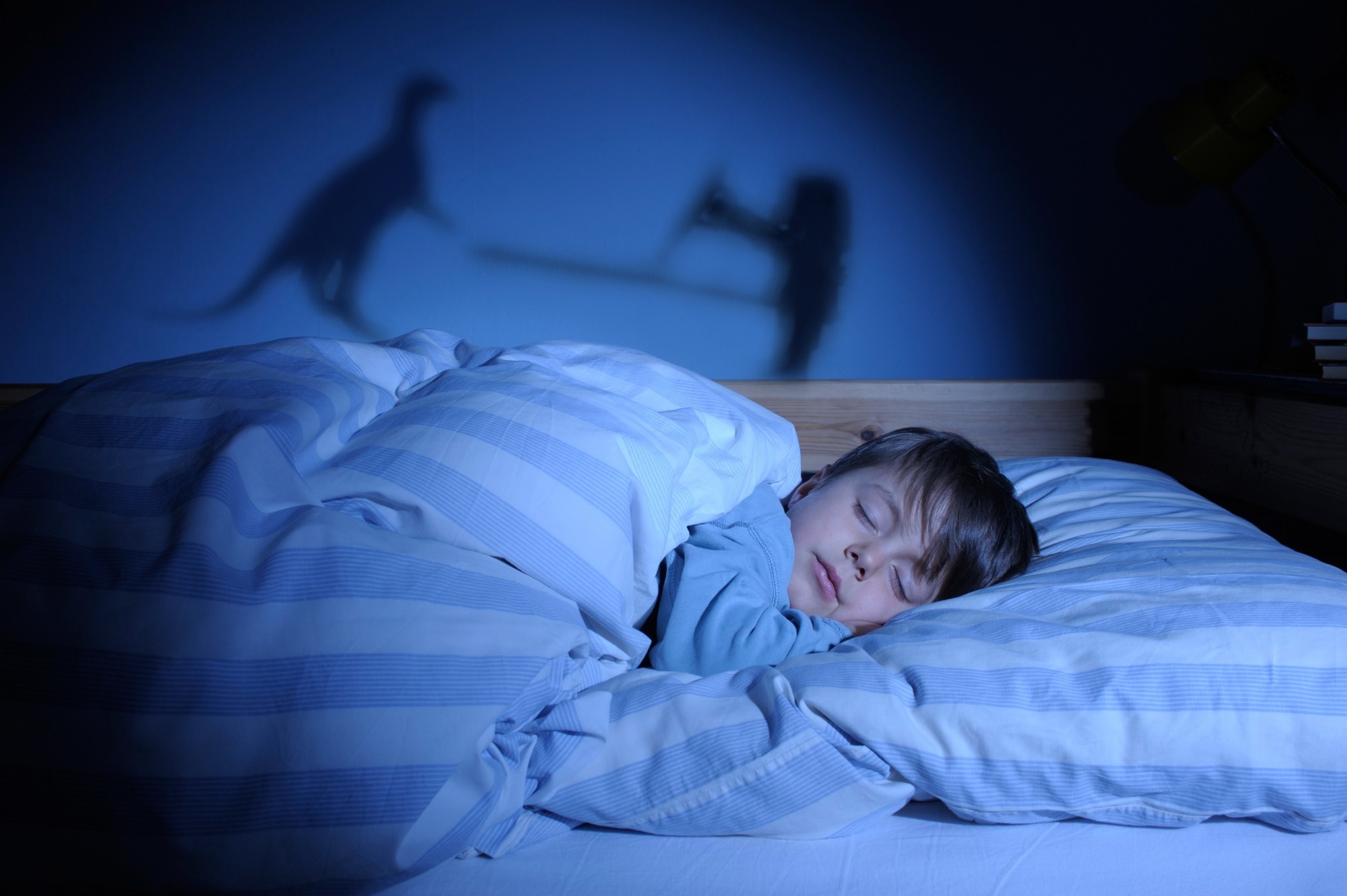Researchers reveal that many children’s mattresses release high levels of hazardous chemicals during sleep, raising fresh concerns about everyday exposure in early life.
 Study: Are Sleeping Children Exposed to Plasticizers, Flame Retardants, and UV-Filters from Their Mattresses? Image Credit: granata68 / Shutterstock.com
Study: Are Sleeping Children Exposed to Plasticizers, Flame Retardants, and UV-Filters from Their Mattresses? Image Credit: granata68 / Shutterstock.com
A recent study in Environmental Science & Technology measures semivolatile organic compound (SVOC) levels in children’s sleeping microenvironment (SME).
How safe are infants and children in their sleep environment?
Infants and children up to four years of age spend an average of 18 hours every day in their SME, which may consist of mattresses, pillows, toys, bedding materials, and the air surrounding their immediate sleeping area.
Previous studies have reported that SMEs often contain harmful chemicals, such as volatile organic compounds (VOCs), semivolatile organic compounds (SVOCs), and biological contaminants, including mites, bacteria, and fungi. Recently, SVOCs, such as stain repellents, plasticizers, and flame retardants, have been detected in many mattresses.
Since SVOC additives are not chemically attached to mattress materials, they have the potential to contaminate the surrounding air, clothing, dust, toys, and skin surfaces. This migration of SVOCs, which are high-fugacity materials, may occur due to their passive diffusion to a lower fugacity, thereby achieving chemical equilibrium.
Children’s movements through shifting positions while sleeping or bouncing on a mattress also accelerate SVOC migration, which subsequently increases exposure to these harmful chemicals. In fact, previous studies have estimated that the SVOC inhalation rate among children is 10 times higher than that of adults.
In addition to inhalation and dermal exposure from sleeping on mattresses for prolonged periods, frequent hand-to-mouth and mouthing activities by children also increase their susceptibility to SVOC exposure.
Children’s exposure to certain SVOCs, such as ortho-phthalates (PAEs) and certain organophosphate esters (OPEs), increases the risk of allergic diseases like asthma. These chemicals can also trigger adverse neurobehavioral outcomes, including effects on cognitive ability, prosocial behavior, and working memory.
Several countries, including Canada, have begun enforcing regulations to limit the use of some SVOCs, including benzyl butyl phthalate (BzBP), di-n-butyl phthalate (DBP), and di(2-ethylhexyl) phthalate (DEHP), in mattresses and toys. Canada and the United States have also banned the use of foam-based products, including tris(1,3-dichloro-2-propyl) phosphate (TDCiPP) and tris(chloropropyl) phosphate (TCPP), in mattresses intended for children three years of age and younger.
Testing children’s mattresses for selected SVOCs
In the current study, a total of 16 new, low-cost, and varied certified children’s mattresses (M1-M16) were purchased from major North American retailers. All mattresses were evaluated for the presence of selected SVOCs, with compliance to Canadian regulations.
M1-M16 were tested for carcinogenic flame retardants. PAEs, such as DBP, BzBP, and DEHP, were also measured to ensure that these mattresses adhered to safety limits set by U.S. regulations for children's products, including their mattresses.
A total of 45 analytes were tested, including OPEs, PAEs, BPs, and 5 SALs. All experiments were conducted at the University of Toronto.
High SVOC levels are present in children’s mattresses
Of the 45 test analytes, 21 were detected in 16 mattresses with detection frequencies (DFs) of 88% for tris(2-butoxyethyl) phosphate (TBOEP) and 6.3% for TCEP, methyl salicylate (M-SAL), and tris (2-isopropyl phenyl) phosphate (T2IPPP).
No association was established between the total number of SVOCs detected in covers and foam and the mattress cost. Likewise, no relationship was observed between total SVOC concentrations and the type of polymer used in the cover, such as flexible polypropylene (PP), rigid polyvinyl chloride (PVC), or polyethylene (PE) copolymer.
The researchers did not find any association between SVOC concentration and the country in which the mattress components were manufactured.
SVOCs were consistently found in the mattresses’ foam and cover, thus indicating that these materials may function as the primary source of contamination. While high levels of BPs, PAEs, and SALs were detected in the covers, all tested OPEs were found at higher concentrations in the foam, except for TBOEP.
Nonmetric multidimensional scaling (NMDS) analysis revealed that mattress covers and foams are rich sources of TCEP and TCPPs, which can potentially migrate into the cover materials. Several mattress covers contained DiBP and DiNP concentrations exceeding the permitted levels in Canada.
Both emissions and DFs were significantly higher in the presence of heat, weight, and a combination of both. Thus, children’s body heat and weight increase SVOC emissions, and as a result, their exposure to these harmful chemicals increases.
The researchers estimated that children would be exposed to at least seven SVOCs detected in the mattress sampler and SME air samplers. In SME, the highest air concentrations were for BzBP, followed by DnBP.
Manufacturers should improve the oversight of their products so that they do not violate regulations, that they comply with their own product certificaitons, improve manufacturing practices so that unintended contamination is minized, and that such chemicals are not use when not needed.”
Conclusions
Mattresses are a significant source of SVOC exposure to young children in their SMEs, thus emphasizing the crucial need to update current regulations to restrict children’s exposure to harmful chemicals. Nevertheless, additional studies using larger sample sizes are needed to validate these findings.
Journal reference:
- Vaezafshar, S., Wolk, S., Simpson, K., et al. (2025) Are Sleeping Children Exposed to Plasticizers, Flame Retardants, and UV-Filters from Their Mattresses? Environmental Science & Technology. doi.org/10.1021/acs.est.5c03560